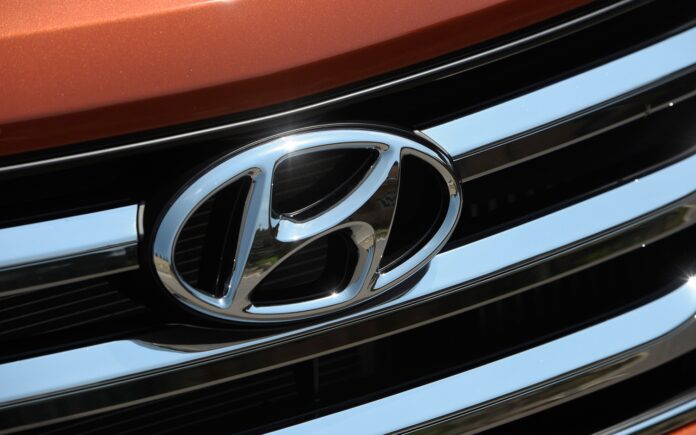Hyundai Nishat, the Pakistani arm of the global automotive giant, has unveiled its penultimate sports utility vehicle (SUV) — the Santa Fe. The car takes aim at both the hottest car on the market, and the king of the local automotive industry immediately upon launch, and it might just have what it takes to be a problem for the rest of the industry for a myriad of reasons.
Why, you may ask, do we assert such a claim? Our conviction stems from reliable sources indicating that dealers are amassing substantial sums — amounting to several hundreds of thousands — merely to permit prospective buyers to reserve their vehicle. There also seems to be a limit on the number of vehicles that can be booked per dealer. But first, let’s start with the two variants of the Santa Fe themselves.
Running through the spec sheet
The Santa Fe Hybrid has been introduced in two distinct variants: the Santa Fe Smart (the standard model) and the Santa Fe Signature (the premium model). Both models are hybrid electric vehicles (HEVs), with the Santa Fe Smart carrying a price tag of Rs 1 crore and 29 lakh, while the Santa Fe Signature is priced at Rs 1 crore and 49 lakh.
Reservations for the vehicles are now open at authorised dealerships across Pakistan, with a down payment of Rs 20 lakh. A limited number of 150 units are available for immediate delivery.
Under the bonnet, each vehicle is equipped with a robust 1598 cc engine, capable of delivering a staggering 177 horsepower (hp) and 265 newton-metres (Nm) of torque. The hybrid motor enhances the vehicle’s performance, providing a combined output of 227 horsepower (hp) and 350 Newton-metres (Nm) of torque. The engine is paired with a smooth 6-speed automatic transmission. The Santa Fe Signature offers various drive modes, including multi-terrain mode (snow, mud, sand), and an all-wheel drive mode. In contrast, the Santa Fe Smart is available with front-wheel drive only.
The vehicles’ exteriors boast alloy wheels, LED headlamps, and a panoramic sunroof among other features. Inside, occupants are treated to ventilated seats, an advanced infotainment system, and various adjustable seat options. Safety is paramount with features such as six airbags, parking sensors, and a 360-degree camera (exclusive to the Signature model).
Having said that, two aspects stand out as potential game-changers for the industry. Firstly, the competitive pricing of both models could disrupt the market dynamics. Secondly, the introduction of the Santa Fe marks it as only the second hybrid vehicle available in Pakistan — a significant milestone in the country’s automotive history.
Between the car on the winning streak, and the king
The Santa Fe’s price tag has certainly raised eyebrows. Just a month before its launch, whispers of a price range between 1.3 and 1.7 crores were circulating. However, the sub 1.5 crore price point has made it a more enticing option than initially anticipated.
“The price point is rather appealing,” comments Suneel Sarfraz Munj, Co-Founder of PakWheels. “It’s a welcome addition to the market, and if they maintain this pricing, I believe they’ll generate substantial sales,” Munj adds. Echoing this sentiment, Shaheel Shahzad, Co-Founder of Bloombig Overdrive, states, “Hyundai has hit the nail on the head with the launch of Santa Fe. The price point is excellent and the introduction of a Hybrid engine is a commendable initiative.”
The standard Santa Fe — dubbed the Santa Fe Smart — finds itself in direct competition with the current sensation in Pakistan’s automotive market. The Santa Fe is approximately Rs 8 lakh pricier than Haval’s H6 HEV. While this might seem significant, it only represents a 7% increase from the H6’s Rs 1.21 crore price tag.
So, what does the additional Rs 8 lakh offer? The Santa Fe, with its larger dimensions, offers a more spacious interior, making it an ideal choice for larger families or those who value extra room. It can comfortably accommodate up to seven individuals. However, the H6 HEV, being taller and having a higher ground clearance, offers an edge in off-road driving experiences.
In terms of performance, the H6 HEV takes the lead. Despite having a smaller engine displacement of 1,497 cc compared to Santa Fe’s 1,598 cc, it outperforms with a higher horsepower of 240 HP @ 5,500 RPM and torque of 530 Nm @ 4,400 RPM. This means you can expect better acceleration and pulling power from the H6 HEV.
Fuel efficiency is another critical factor for many drivers. Here again, the H6 HEV shines with better fuel efficiency in both city and highway driving conditions.
In terms of comfort features and quality of life features, both vehicles are decked out so much that most of them are standard across both of them. Notable exceptions would be that the Santa Fe Smart does not come with a heads-up display like the HEV but compensates for it by offering heated seats.
Choosing between the two would require nitpicking. However, the most significant difference between the two (no pun intended) is size. The Santa Fe is the larger vehicle and subsequently holds a special allure for domestic buyers.
Read more: Can KIA be King, or do the Big 3 have another trick up their sleeve?
However, long story short: bigger is better when it comes to sales.
Munj and Shahzad concur that the Santa Fe could challenge Haval’s dominance. However, they were uncertain whether it would be able to persuade prospective buyers for the Toyota Fortuner. Whilst Shahzad found it difficult for more Fortuner buyers to want to shift to the Santa Fe altogether, Munj believes the car might have some success with those buyers looking to only buy for their families and drive it within the city. Munj did not, however, extend the same level of optimism to those Fortuner buyers who buy the vehicle for its off-roading capabilities.
Profit, however, has a different take on the matter.
The Toyota Fortuner’s most economical variant — the Fortuner 2.7G — is a staggering Rs 11 lakh pricier than the Santa Fe Signature. Yet, the disparity in features is perhaps even more pronounced than the price gap. Aside from the inherent benefits of the Fortuner being a more comprehensive SUV, it falls short in comparison to the Santa Fe Signature when it comes to features. The Fortuner 2.7V, which boasts similar features to the Santa Fe Signature, such as leather seats, is a jaw-dropping Rs 34 lakh more expensive than the Signature. This highlights the unique advantage that the Santa Fe holds.
Driving full throttle in your own lane
In Pakistan, Toyota’s Fortuner and Revo were the sole vehicles operating beyond the Rs 1.5 crore threshold. The Revo, for all its worth, is a very specific type of vehicle and not one that frequently comes up in discussions about everyday vehicles. Until recently, prospective car buyers had to make a leap of Rs 30 lakh from Haval’s HEV to the base variant of the Toyota Fortuner if they desired a seven-seater vehicle. Or perhaps a leap of Rs 60 lakh if they wished to purchase standard company equipped leather seats.
Now, there’s an option that sits comfortably in the middle for car buyers — an option that not only saves them money but also offers them more features at a lower price point, provided they’re willing to forego off-roading with their vehicle. The Rs 1.5 crore mark also holds special significance in the Pakistani automotive market.
Rewinding just a few years back to when Audi e-tron first launched in Pakistan, it was introduced at roughly the same Rs 1.5 crore price point. This was when the car’s popularity soared and it became a common sight on the roads of Islamabad, Karachi, and Lahore. However, when the rupee depreciated in value, the e-tron nearly tripled in price and we saw a decline in purchases.
Moreover, Profit acknowledges that KIA’s Sorento is another vehicle that offers prospective buyers the utility of seven seats in a larger profile but that vehicle comes with its own unique set of challenges.

























Its A good thing that automobile industry is booming but on the other hand we are still not be able to make the prices affordable like in europe and other countries this thing should be take in account because these companies are making lots of profit with low end cars for example (Alto)